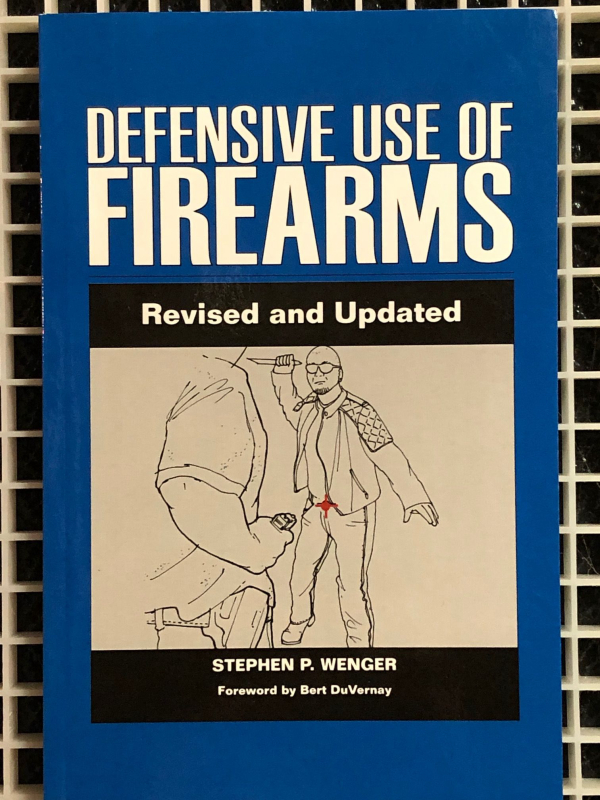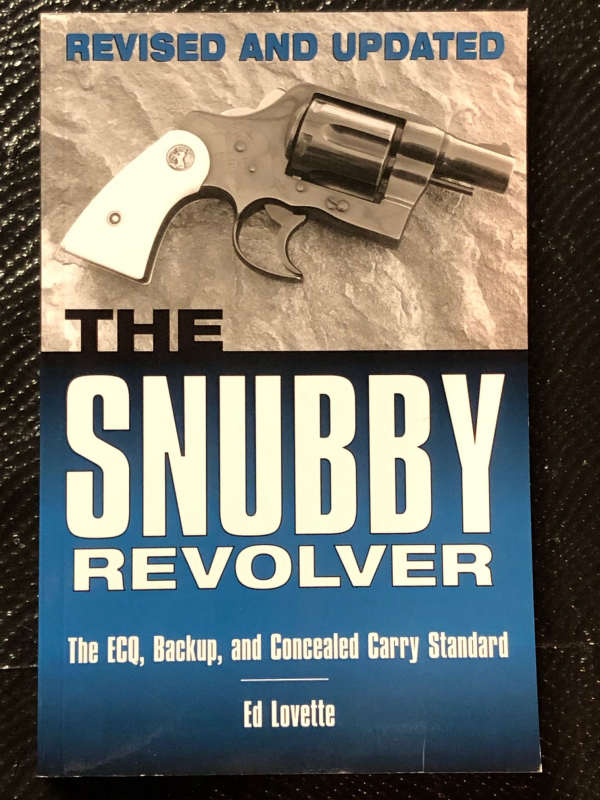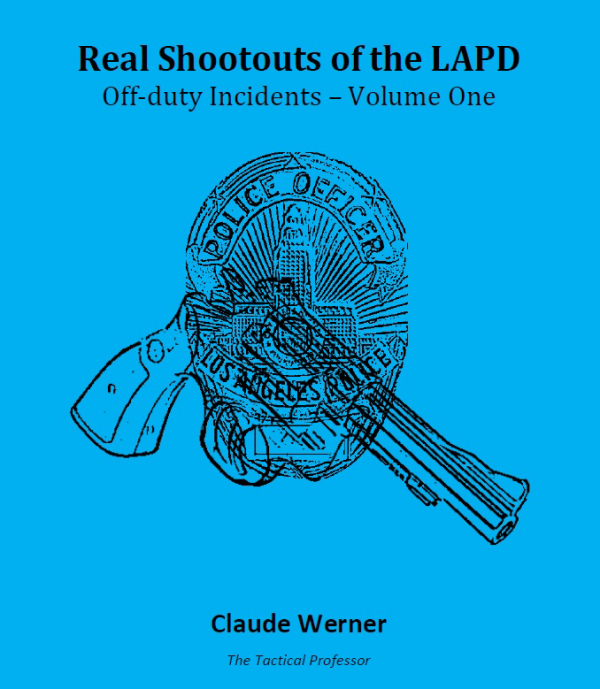There are changes upcoming in a pair of important books covering our field of endeavor. One is an essential book for anyone new to the defense use of firearms, another is the long-awaited update to a primary text about a specialist’s gun. I find both to be critical. One gives the grounding for fighting with guns and the other shows the unquestionable utility of the firearm reputed to be the toughest to shoot accurately.
 |
Then we’ll get a peek at a book now available online that provides situational examples of defense gun uses. It’s a good way to get a grasp of what’s been happening out in the world for real, letting you get ‘mental reps’ or ‘mental rehearsal.’
The essential beginner’s book – and appropriate to refresh old hands – is Stephen Wenger’s book, Defensive Use of Firearms. Currently available online in its second edition, an update is forthcoming. The first two editions, concise, clear and well-illustrated, gives a grounding in defense gun use. It includes “a continuum for close-quarters combat,” something that’s given little consideration in many places. It’s packed with common sense advice, nicely illustrated to assist comprehension. There’s a glossary, necessary to communicate in the technical field of guns – and the law.
He goes through safety first, as one should, including what’s come to be taken as Rule 5 (of the Four Rules). He properly considers the critical aspects of defensive gun use in order as mental awareness, mental preparedness, tactics, skills and choice of equipment.
All of the book is choice material – and he’s someone who still articulates a “safety circle” -- to keep the muzzle oriented to avoid those pesky Rule 2 issues. A current discussion about “muzzle diversion” techniques as opposed to rote, ‘range-world’ ready positions, can be seen here, provided by Dave Spaulding.
You have nothing to lose – but a lot to gain – by reading this book.
 |
Another book in the process of being refreshed is Ed Lovette’s tome, The Snubby Revolver: The ECQ, Backup, and Concealed Carry Standard. Likewise having a second edition that’s been around for some years (the book was last updated in 2007), Ed recognized that so much had happened so quickly … from new consumers, to the industry that serves them, to interest in the platform … that a refreshed, updated and expanded version of his book is relevant. Who is Ed?
Ed Lovette had a background from military service, through his time at the New Mexico law enforcement academy and, eventually, a stint at CIA. He’d passed his knowledge along, through Editor Harry Kane, in Combat Handguns. His book is a basic text for use and nomenclature of the short-barrel revolver.
Ed was coaxed into a newer edition -- the original and 2nd Edition now fetch collectors’ prices. I was one of a group that was asked to proof the new effort. I did. Part of the reason I was asked is that I answered some questions for the estimable Mr. Lovette – and for me to get asked by the lofty Mr. Lovette, someone I’d classify as an actual expert was really a treat.
I was thrilled to be involved for a very small part of the book also so I’d get the shot at reading the pre-production galley of the book. I knew I’d learn something – and I did.
Like earlier editions, he seeks to answer the question “Why a snub nose revolver?” and to take it beyond simple selection to best practices for gear acquisition, learning and training, tactics – including awareness and avoidance – and bringing us up to date with all the new gears and support gear devised and produced since his earlier efforts.
Keep an eye out here for upcoming announcements about both of these books.
But what do you read now? If you thirst for a “new” book, check out Claude Werner’s Real Shootouts of the LAPD -Off-Duty Incidents – Volume One.
 |
Available online now, this book lists off-duty incidents reported by LAPD officers for review by the Board of Police Commissioners. The Board issues findings in three areas: Tactics, Drawing and Exhibiting of a Firearm and Lethal Use of Force. Every incident is investigated and results are posted on the LAPD website. This means we have more details about these events than any from “news” reports. Only BOPC Investigation Summaries are used in Claude’s book: there are no ‘war stories.’
As off-duty engagements are discouraged, these are less ‘enforcement actions’ and mirror the types of incidents involving armed citizens more than uniformed officers on-duty. These summaries “provide a useful insight into the specifics of the use of deadly force, the circumstances that led up to it, and the actions and tactics of the participants immediately afterward.”
Looking at each story, we have an opportunity to see what caused the event, what “good tactics” might look like in a similar event and – critically – “what prudent post-incident procedures might be.” Post-engagement sequencing is so seldom discussed, trained and practiced even though it’s a major part of winning the engagement. We can also determine if there were opportunities to deescalate and see what an investigation into your use of force might look like.
About 1/3 of these cases occur “in or around an officer’s home,” consistent with any home defense scenario. There are attacks by vicious animals, bringing their own unique aspects to the response. Finally, Claude examines unintentional discharges – also covered by the BOPC summaries. It’s smart to learn from the mistakes of others.
Good information, easily acquired. Check these books out.
- - Rich Grassi